We start by titrating a 'blank' or a sample with only magnesium chloride, as we want to know the exact volume of EDTA used for it, so we can subtract it later. For a more complex explanation of the experiment you can go here.
Our blank with indicator.
My partner getting our calcium sample ready.
Preparing for titration, the paper towel helps to spot the color change more easily.
And done!
First titration of our calcium sample on the left, our blank on the right for comparison.
Second titration.
EDTA, or the big name there on the bottle, lol.
The magnesium chloride sample.
Some hydrochloric acid.
Eriochrome Black T indicator, blue in distilled water, turns our samples red/pink.
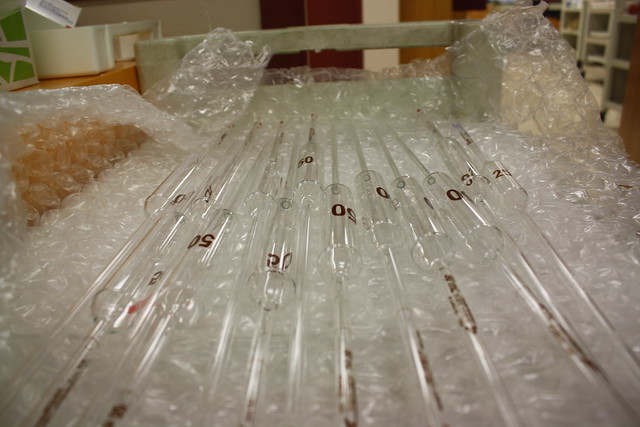
These are volumetric pippettes that read to the hundredths spot. We used 25.00 mL ones for our standardization and then 50.00 mL ones for our actual test of a water sample.
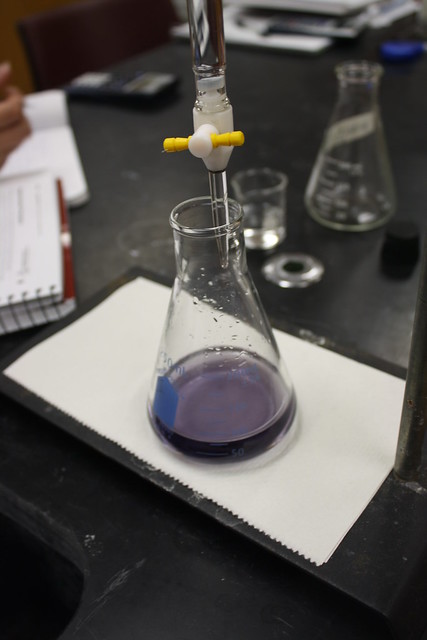

First sample of fountain water, titrated to the end point.

Sample two before titration.


Endpoint titration three.

Materials desk, it has the magnesium sample, the indicator, and some hydrochloric acid that we didn't use.
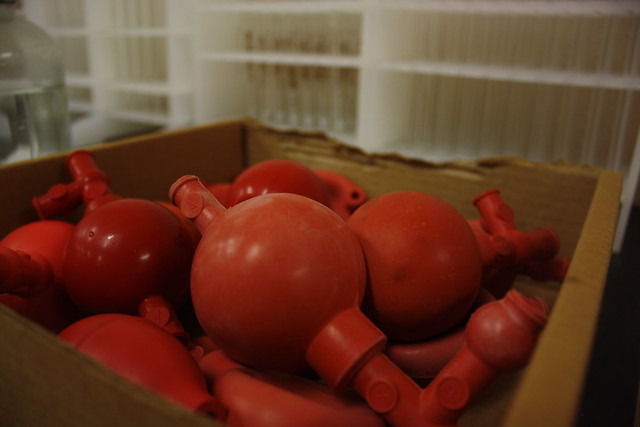
These are the bulbs of the volumetric pipettes.
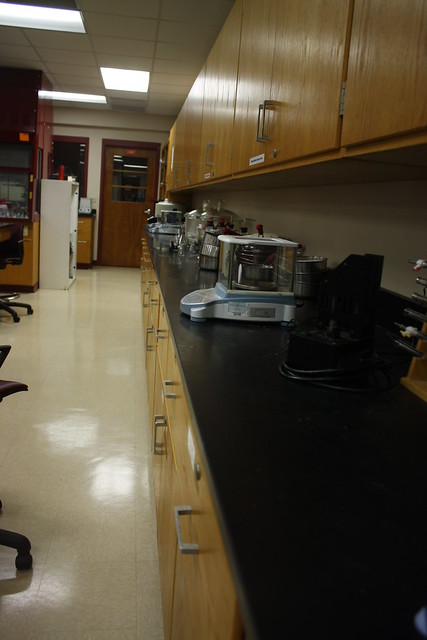
Random shot down the classroom.

Another students table, some very pretty colors here!

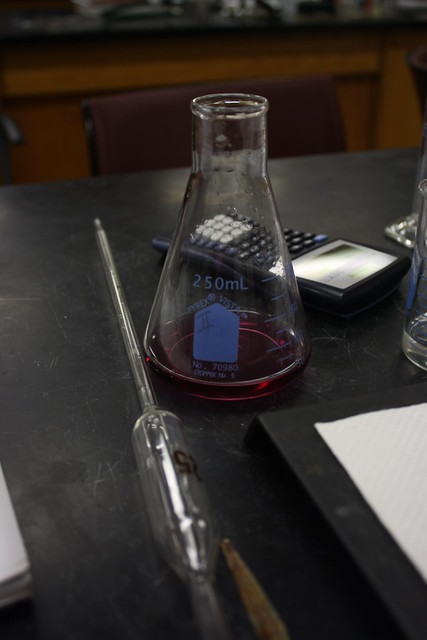
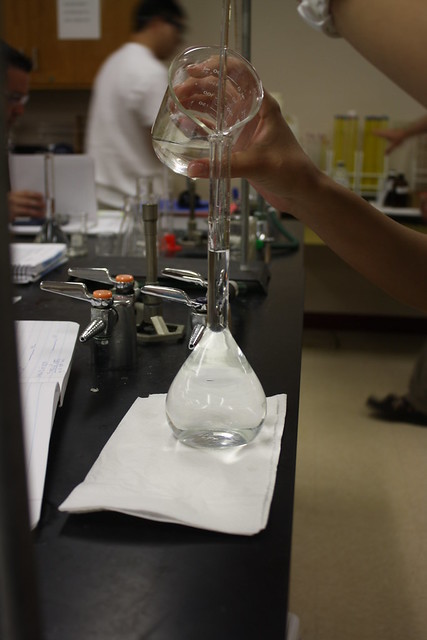

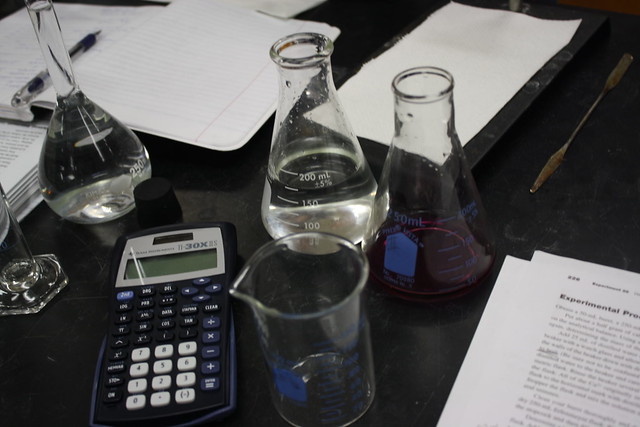
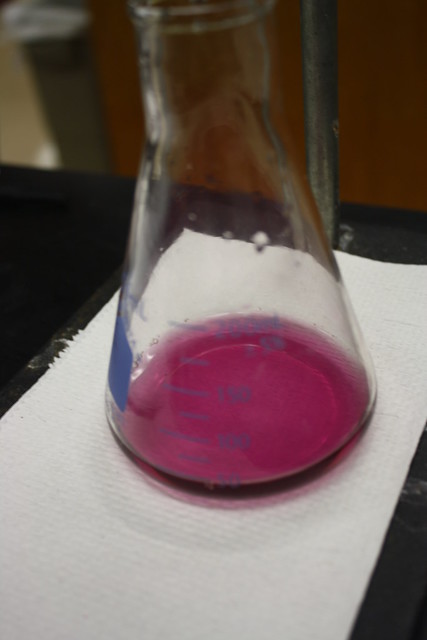
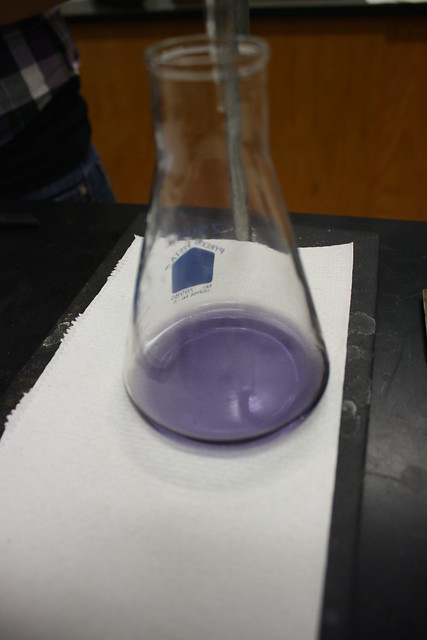
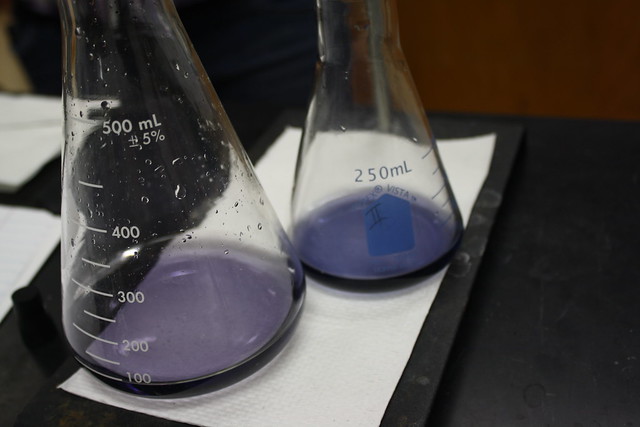
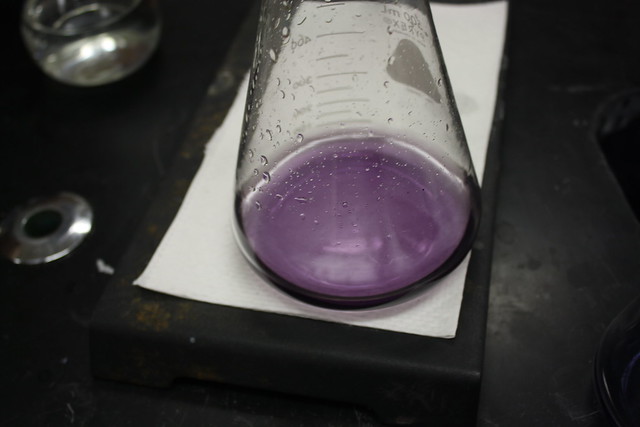
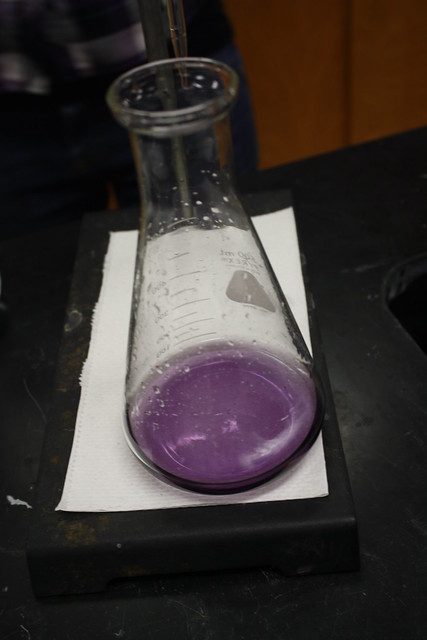
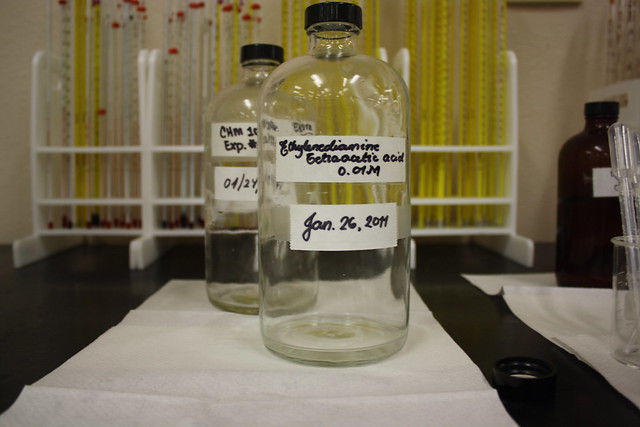

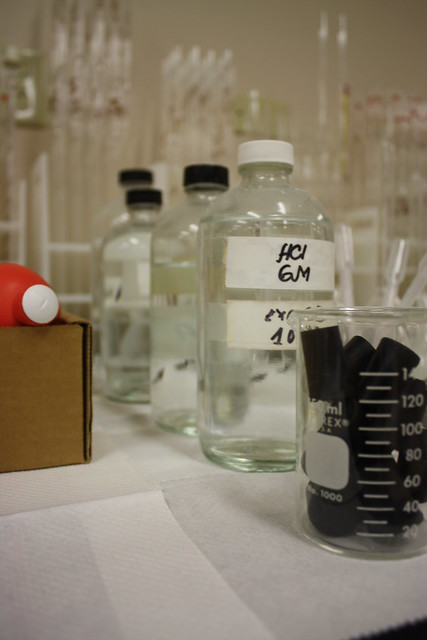
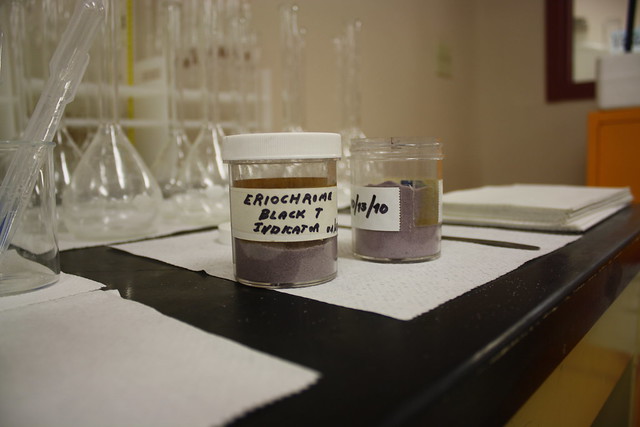
No comments:
Post a Comment